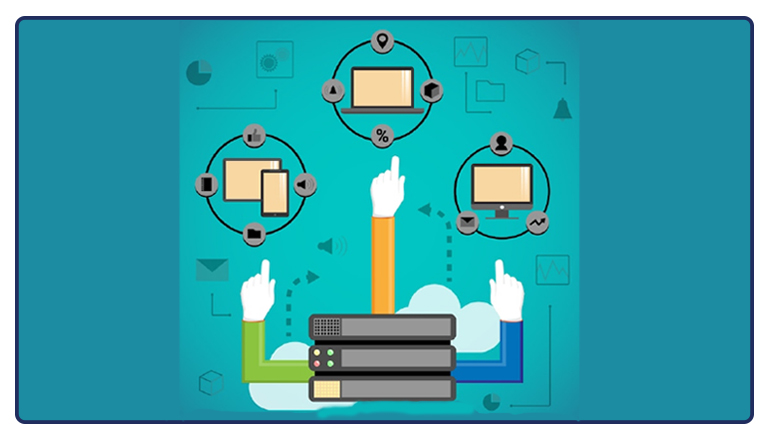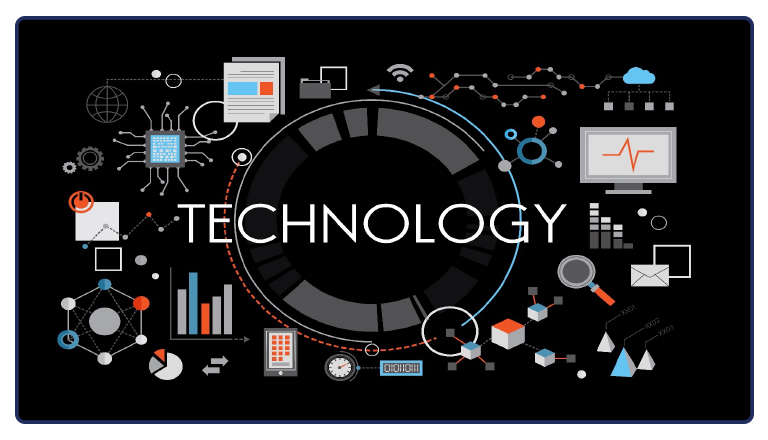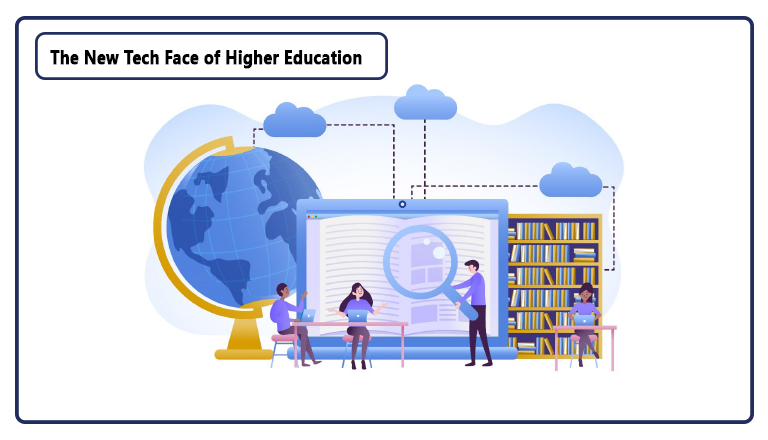Technology has had and continues to have a great impact on almost all economic sectors. And the higher education sector is no outlier. Although long considered to be one of the most traditional sectors of the economy, the higher education sector has rapidly developed in recent years to adapt to the rise in technology use.
In this article, we explore the key technologies affecting higher education, their impact, and how educational institutions can best maximize their benefits.

The Key Technological Trends in Higher Education
The trends affecting higher education are as many as the emerging technologies themselves. However, to make things simple, the 2023 EDUCAUSE Horizon report has made a concise list of the technological trends that are expected to have a significant impact on the sector.
Predictive Artificial Intelligence (AI)
Predictive artificial intelligence is the technology that enables machines to employ learning processes, as humans, and, thereby, employ decision-making. Examples of predictive AI are recommendations in video streaming platforms such as NetFlix or social networking platforms such as Facebook. You may think, ‘What does predictive AI have to do with education?’ A lot! By using predictive AI, educational institutions can use learning analytics to recommend the suitable type of learning content, exercises, and activities to learners, thereby, providing learners with unique, personalized learning experiences.
Generative Artificial Intelligence (AI)
This is not your standard AI; this type of artificial intelligence enables the generation of near-authentic text, images, and audio, almost similar to the outcome of human creation. Think ChatGPT, for example! This technology is expected to have a great impact on higher education as generative AI can help learners and faculty translate material instantly, get ideas when they feel ‘stuck’, and generate manuscripts, proposals, assessments, etc. fast. By using generative AI, learners and teaching faculty can spend the time saved on mundane tasks to focus on more cognitively challenging learning activities.
Mixed Learning Modalities
Higher educational institutions started adopting different learning modalities for more than a decade now. The learning modalities used have been face-to-face, on-site, in-person, blended, hybrid, online, remote, distance, and more. What’s new now is that universities are offering a combination of these modalities within the same course. In other words, a single course could have some sessions on-site, others one-on-one in-person, and others online, with exercises submitted through the learning management system (LMS). This helps increase access to learning for students from various locations and students with disabilities, and, most importantly, broadens the students’ learning environment as they learn to access knowledge from a wide variety of sources.
HyFlex
HyFlex stands for hybrid and flexible. And although it may seem just the same as mixed learning modalities, it is actually different. HyFlex means that for the same course, students get the flexibility of attending it all online, on-site, or blended. The rise of HyFlex in the higher education sector has a great impact on accommodating a larger student population that has to balance between studies and work or family responsibilities. It also helps increase efficiency in the learning process as students prefer to use commute time in maximizing learning time.

The Technological Trends Still In Infancy
Although technologies such as Augmented Reality (AR), Virtual Reality (VR), and 3D Printing are no new advancements, these technologies are rendered still hard to adopt in the higher education sector. This latency for adoption may be attributed to the relatively high cost of the deployment of these solutions.
Nevertheless, it is estimated that these technologies can play a huge role in improving STEM education by enabling the creation of virtual or remote labs and creating virtual tours and study props in almost an instant. In fact, a study by McKinsey shows that 37% of higher-ed students are “most excited” about the technology’s potential in the classroom and 88% of them believe AR/VR will make learning more entertaining. And while the impact of these technologies on learning is still not proven, some data looks promising. For example, in a recent pilot study cited by McKinsey, students who used a VR tool to complete coursework for a STEM subject improved their subject mastery by an average of two letter grades.
Capitalizing on Technological Trends in Higher Education
It is clear that these technological trends are broadening students’ learning environments, opening ways for students’ collaboration, freeing faculty time to build more authentic connections with students, increasing higher educational institutions’ efficiency, and reducing admin expenses. However, for institutions to make the best use of these technologies, there are some factors they must bear in mind.
Building Students’ Metacognitive Skills
With the wide variety of content that students can access inside and outside the classroom — instructor-provided or peer-shared— students must develop the skills to learn how to select information, organize it, critically analyze it, and put it to good use. Teaching faculty, on the other hand, must re-imagine ways of assessing students’ skills. Rote memorization and basic knowledge of concepts are skills no longer valued in the age of generative AI. This requires teaching faculty to develop new ways of assessing the skills that will actually matter in the future such as critical thinking and application.
Adding Sense, Ethical Judgement & Cultural Meaning
Similarly, in the age of generative AI, information will be much easier to access than ever before. The well-educated student’s task becomes adjusting knowledge to meet their contextual and cultural demands. Therefore, universities that wish to make the best use of these current technologies must develop their students’ skills in these contexts. Moreover, these technologies also give rise to questions on intellectual integrity and AI bias. Universities should also ensure to include relevant guidance in their courses to students on these matters.
Teacher & Student Training
Although both learners and teaching faculty are enthusiastic about adopting new technologies in the learning experience, technology adoption can sometimes be a strain, especially on less technically adept lecturers or students with no or minimal access to internet-connected devices. Moreover, even the tech-savviest of students need encouragement and motivation to make the time to access and use university platforms. Therefore, if you wish to make the best use of these technologies, your university must create programs for student and teacher orientation and assistance.
Transform Your Educational Institution With High Tech
These were the main key technological trends affecting the higher-ed sector and how you can best capitalize on them. If you’re interested in knowing more about how tech can transform your educational institution, you can check out our academic solutions here.

